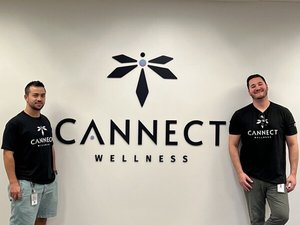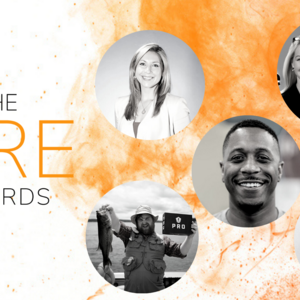A tech ecosystem is more than its startups and tech companies--university researchers push technology forward through moonshot research projects that can revolutionize the way that we view and interact with the world.
That was certainly true in 2016: University researchers in Chicago and Illinois took on moonshot projects from 3D printing body parts to creating methods of recycling greenhouse gas to using supercomputers to recover lost history.
Here's a look at the researchers who wowed us in 2016.
Ramille Shah, Monica Laronda, Teresa Woodruff, Alexandra Rutz: The research team 3D printing ovaries
While 3D printed body parts may sound like a plot point in a science fiction novel, earlier this year researchers at Northwestern University Feinberg School of Medicine announced they used 3D printing to create a prosthetic ovary, and successfully transplanted the organ into mice. These mice were then able to bear live young. While this is an early step, their discovery and success could pave the way to transplanting functioning ovaries in women who have struggles with fertility, such as those who have gone through chemotherapy and radiation which can damage reproductive organs, or even trans women.
"We are developing new ways to restore their quality of life by engineering ovary bioprosthesis implants," said lead researcher Monica Laronda.
Sir Fraser Stoddart: The researcher and Nobel Prize winner that revolutionized chemistry through "mini-machines"
Northwestern chemist innovates at a small scale with big results: Stoddart's molecular-sized "mini machines" led to the development of artificial molecular switches and motors, which have been implemented in the densest of memory chips and have created controllable and targeted drug delivery systems to treat cancer and other diseases. His work can be used in the development of new materials, sensors and energy storage systems. This year he was one of three researchers awarded the Nobel Prize for chemistry for his work.
"The development of computing demonstrates how the miniaturization of technology can lead to a revolution," said the Royal Swedish Academy of Sciences explained in a release.
Amin Salehi-Khojin and Larry Curtiss: The researchers who created an "artificial leaf" that could recycle green house gas and grow plants on Mars
This year University of Illinois-Chicago and Argonne National Lab scientists unveiled the prototype of an "artificial leaf" that can convert carbon dioxide emissions into usable fuel, using solar power. Inspired by the process of photosynthesis, the researchers use a patented solar cell to take in carbon dioxide (CO2) and water, convert it into syngas, and then convert the syngas into methanol, diesel and other fuels. This closed loop could halt additional greenhouse gas emissions from entering the atmosphere while creating a new fuel source from recycled Co2, all powered by the sun (eventually, it could potentially be used as a source for both oxygen and food for astronauts on Mars, where the atmosphere is mostly carbon dioxide).
"We have to recycle the greenhouse gas and carbon dioxide and use it as a new source of energy," said Salehi-Khojin. "This is going to be the most important innovation of the 21st century because we are dealing with energy and dealing with the environmental issue."
Andrew Singer: The researcher who can live stream video through muscle and bone
Earlier this year University of Illinois Urbana-Champaign researchers demonstrated they could live-stream HD video through pork loin and beef liver, at speeds fast enough to stream Netflix. This early experiment could pave the way toward wider use of video live stream inside the body, as their ultrasonic tech allows for more reliable video, using less power. Researchers see this tech implanted in pacemakers, glucose monitors and insulin pumps and ingestible cameras for imaging the digestive track, among other uses.
“You can imagine a device that is swallowed for the purposes of imaging the digestive tract but with the capability for the HD video to be continuously streamed live to an external screen and the orientation of the device controlled wirelessly and externally by the physician," Singer said.
Jeremy Hajek: The researcher that programmed drones to fly themselves
Illinois Tech professor Jeremy Hajek wants to help you summon a drone on demand. This year Hajek, along with a group of graduate students, created and demo'd a working autonomous drone framework--open source technology that allows a drone to be called to locations on demand. Using an app and server, users can summon a drone to specific GPS coordinates, and the drone will fly itself to the location, drop off cargo and retun to its home base. They're still in early stages--he's using off-the-shelf parts and the flight path is only 60 to 90 feet in the air, but eventually he hopes this tech could be used in disaster situations for emergency relief.
Ken Forbus: The researcher aiming to teach morality to robots
Can robots learn morality just like humans? Ken Forbus, an artificial intelligence expert at Northwestern's McCormick School of Engineering, believes so-- he's developing a program that could teach robots make moral decisions through analogy. Essentially, he can train artificial intelligence on a series of human stories, parables and stories, and the robot would make the same decision as a human: When tested against psychological experiments, robots have the same decision outcomes as most humans. It's an increasingly important issue as robots become more autonomous, and will have to face ethical issues in programming (ex: should your driverless car hit a pedestrian to save your life?)
"It's important, no matter what you do, that the AI's decisions are explainable and testable," he said. "Explainability is a prerequisite for trust."
Ali Cinar and Nicole Frantz: The researchers using wearables to improve the "artificial pancreas"
When a major medical device becomes available, that is sometimes just the first stage of innovation. That's the case for "artificial pancreas" devices, technology that combines insulin pumps and sensors to do continuous glucose monitoring for people with diabetes, eliminating the need for a manual finger prick. While these devices are expected to hit the market later this year, there is still a need to make the monitoring process more efficient--and that's where Illinois Institute of Technology researchers Ali Cinar and Nicole Frantz come in. They're using wearables to measure changes in physical activity--for example, when people start exercising--to better inform these devices to quickly respond to unpredictable behavior. This will be especially important for helping treat children with diabetes stay safe as they're learning to manage their disease.
"What we’re trying to do is use a number of additional signals to be able to determine the current state of that person’s body, in order to make far better decisions," said Cinar.
Ruby Mendenhall: The researcher recovering the lost history of black women using a supercomputer
Using a supercomputer in Pittsburgh, UIUC sociology professor Ruby Mendenhall (pictured above) has culled 20,000 documents that discuss black women's experience from a 100,000 document corpus (collection of written texts), and using topic modeling and data visualization she's started to identify clues that could indicate the contributions of black women previously not recorded in history. For example, finding documents that include the words "vote" and "women" could indicate black women's participation in the suffrage movement.
"A lot of times when people think about big data, they think about it in ahistorical times…outside of this political context," she said. "It's really important to think about whose voice is digitized, in journals and newspapers."
Note: The story originally referred to Sir Fraser Stoddart as 'Sir Francis Stoddart'. It has been updated to reflect the correction.








